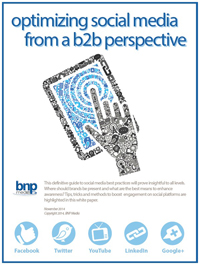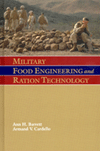Food safety
Lessons learned from non-food industries
For those who can resist the not-invented-here mentality, pharmaceutical manufacturing is rife with methods and tools that can improve outcomes in food and beverage production.

Bunny suits and face coverings are becoming the norm in slicing rooms and other sensitive areas of food plants.

Different cleaning agents used in food and pharma plants can dictate different materials of construction for robotic installations. Source: ABB Robotics.

Handheld analytical tools often are used to validate the chemical composition of incoming raw materials in pharmaceutical production. Device manufacturers see potential for food applications as well. Source: Thermo Scientific.

It doesn’t necessarily outperform the carbon black materials traditionally used in high-performance seals and O-rings, but white EPDM appears more sanitary, and that can be reason enough to use it in critical manufacturing environments. Source: Freudenberg Sealing Technologies.




Products like nutritionally enhanced water and probiotic yogurt help obscure the line that divides food and medicine. That’s a good thing, because food and pharma production is improved when the best practices from one industry are embraced by the other.
Mixing and matching between these process industries has gone on for decades. When drug makers decided hygienic upgrades were necessary for their production equipment, they turned to the 3-A sanitary standard for dairy as their model. Different operating environments and cleaning regimens led to development of the P 3-A standard for pharmaceutical production, but the example underscores the value of looking outside one’s business for transferrable tools and practices.
In implementing the Food Safety Modernization Act (FSMA), the US Food and Drug Administration is beginning to apply pharmaceutical’s preventive strategy to food manufacturing, where a reactive approach to problems has been the status quo. The change should encourage food production leaders to take a closer look at systems and technologies that can be adapted from the pharmaceutical world.
Title 21 of the Code of Federal Regulation lays out the regulations for both food and drug manufacturing. While FDA traditionally has been more diligent about applying the letter of the law to pharmaceuticals, the agency will be more hands-on in food in the future. FSMA gives regulators the power to order food recalls and effectively shut down a food plant by suspending its registration. In the wake of a Salmonella outbreak, Sunland Inc. in Portales, NM achieved the dubious distinction of being the first food company to suffer the consequences of these broader powers. Although the November suspension from FDA’s registry of food facilities lasted less than four weeks, Sunland was only able to resume peanut shelling operations Dec. 26.
“It’s clear what corrective actions we have to take” to resume peanut butter and peanut paste production, says Katalin Coburn, vice president. Sunland anticipates resuming food production by the end of the first quarter.
Salmonella linked to peanut butter and paste was probably the single biggest factor in rallying industry support for FSMA. More than 200 food companies suffered billions of dollars in losses in 2009 when an outbreak was linked to Peanut Corporation of America, a private-label manufacturer that also was an ingredient supplier to other food companies. It was a dramatic example of manufacturers’ vulnerability to raw-material contamination. One of the first FSMA rules issued by FDA targets raw-material risk by requiring strict segregation of processed foods from ingredients that have not been treated onsite.
Pharmaceutical companies already are required to inspect all raw materials, points out Maggie Pax, senior director, pharma-chem at Thermo Scientific Inc., Tewksbury, MA. Spot checks by quality assurance professionals are inadequate, so the industry has turned to portable analytical instruments to expand sampling programs. Three years ago, her firm miniaturized a near infrared (NIR) analyzer for raw-material identification in pharmaceutical. A general application version of the molecular spectroscopy device followed. “The guts of the system is similar,” says Pax, though the microPhazir Rx includes software that maintains electronic records of scan results.
However, Thermo Scientific’s material analyzers don’t detect contaminants, and FDA has not held food processors to the electronic records requirements of 21 CFR part 11, which drug makers must meet. But portable analyzers can flag out-of-spec materials that warrant more detailed testing, and they don’t require highly trained operators. Once a calibration test is established for the materials of interest, the devices can be deployed. Animal feed suppliers are early adopters of the technology, though Pax sees opportunities in beverage manufacturing and wholesale baking.
Supply chain insights
Like electronic records, track and trace is a requirement for both pharma and food, though FDA is much more demanding of drug manufacturers. Mass production and a shorter shelf life for food are rationales for laxity, suggests Kelly Kuchinski, industry solutions director at Sparta Systems Inc., and the profitability of prescription medications make it easier to justify the cost of comprehensive product genealogy. Nonetheless, she believes food companies should take their cue from pharma and medical device manufacturers to improve track and trace systems.
A quality management system is fundamental for effective track and trace. Hamilton, NJ-based Sparta markets a system called TrackWise, which is used by 77 of the 100 largest pharmaceutical firms to track finished goods and raw materials up and down the supply chain. Sparta’s clients have an average of 650 suppliers, and records are built around batch and lot numbers. The robustness and effectiveness of those systems is reflected in a long-term decline in recalls. In fourth quarter 2011, pharmaceutical recalls were down 35 percent, and medical device recalls fell 60 percent, according to ExpertRecall.
In contrast, food recalls have increased 62 percent since 2007, according to Kuchinski. “You would think the statistics would be dropping, but they are increasing,” she says. “Steps are not being taken to inspect raw materials before they enter the system.”
Major food companies have tried to address the problem by supporting the Global Food Safety Initiative, which promotes stricter food safety standards such as SQF and BRC. But those third-party audit programs focus on standard operating procedures, Kuchinski maintains. Instead, she advocates the use of risk-based audits of suppliers, as they are done in pharmaceutical manufacturing.
The size and complexity of the food production community make effective tracking of food more challenging, adds Jennifer McEntire, senior director-food and import safety at Leavitt Partners. Duplicating pharma’s traceability systems in food “is an unachievable goal at this point,” says McEntire, a food scientist with the DC-based consultancy.
A former senior staff scientist at the Institute of Food Technologists, McEntire helped author a 2010 IFT report on product tracing in the food industry. “The general lack of consistency in types of data collected, as well as lack of definitions of key terms such as ‘lot’ or ‘batch,’ appears to be a major hindrance to effective (food) product tracing,” the FDA-commissioned report concluded. The same is not true in pharmaceutical, where product safety and counterfeiting concerns have resulted in clearly defined standards for lot numbering, expiry date and serial numbers. Electronic labeling requirements are enforced throughout the supply chain, another prerequisite that is absent in food.
“There are several exquisite and elegant solutions available for pharmaceutical, but I would not advocate their use in food,” says McEntire. “At this point, they would overwhelm the food industry.”
Yet progress is being made in some sectors. USDA’s Agricultural Marketing Service is spearheading an initiative called MPXML, a standardized format designed for meat and poultry producers. Even further along is the Produce Traceability Initiative, a case-level electronic system backed by three US and Canadian trade groups and GS1 U.S., the successor organization of the UPC barcode system. While the initiative defines the case, lot and item information to be included in barcodes, it requires scanning and coding at the farm level, where barcodes have never been used. The situation parallels food manufacturing, where sophisticated electronic systems in place at leading firms are undermined by the manual records that prevail at smaller manufacturers and trading partners.
Chemically precise
Major food companies are no strangers to analytical chemistry; many of them have labs onsite that can conduct validation tests on finished goods to ensure chemical profiles are in spec. But customer expectations and regulatory requirements are getting tighter, and food manufacturers are beginning to make greater use of reference standards, not only to finished goods but for in-process testing when minute ingredients are involved.
Thermo Fisher’s handheld NIR analyzers are capable of applying Process Analytical Technology (PAT) for at-line sample testing, giving quality assurance professionals the ability to verify chemical composition. Beverage companies are beginning to go a step further with continuous PAT. Machinery must be equipped with sensors to monitor pH, moisture and other key variables. Sensor data are fed back in real time to a controller, triggering immediate adjustments if chemical composition begins to drift. Controllers from leading automation suppliers already have ports and software to receive the data, notes Kevin Henretta, chief engineer at SensiBlend, Glenview, IL. The challenge is altering a process while it is ongoing, rather than waiting until after a step is complete to learn if product is out of spec.
Variances of a fraction of a gram were acceptable in food and beverage in the past, but that’s changing. For example, potent sweeteners like Stevia are game changers for beverage firms. Instead of 40g of sugar per serving, a reformulation might dictate 5ml per serving. “If you miss the mark by a little bit, it makes all the difference,” points out Frank Jaksch, president & CEO of ChromaDex Corp., Irvine, CA. “Pharmaceutical has the same challenge.” The only difference is, drug makers have lived with the precision challenge longer.
ChromaDex has one of the few reference standards for Stevia, and migration to the sweetener has transformed food to a high-growth segment for ChromaDex, bringing both mainstream beverage companies and niche players to its door. “All of the ingredients being popularized by energy drinks and vitamin waters are like that: The dosage you need for the desired effect is very small,” seconds Henretta. Validating a process’s precision is a good start, but PAT is necessary for day-to-day operations.
The mixers and blenders fabricated by SensiBlend were engineered for pharma applications and incorporate PAT. (A 2004 directive from FDA strongly encouraged drug makers to use PAT.) It is not a requirement, according to Henretta, but the agency dangled the carrot of improved product quality and financial savings from reduced waste. The stick was more rigorous inspections, much like the risk classifications that exist for ready-to-eat meats: Bologna slicers don’t have to be level 1, but achieving that status results in fewer inspections.
Shiny surfaces
Painted steel has given way to 304 stainless with a brush finish as the preferred material of construction for food processing equipment. Henretta predicts the industry will follow pharma’s lead and specify 316 and 316L stainless. “More and more people are saying they are migrating to 316,” he states, “and I am hearing requests for a high-polish treatment” to food contact areas.
Polishing typically is achieved through passivation, a process that involves flushing an acidic solution through pipes and tanks to produce a finish resembling polished chrome. FSMA requires food manufacturers to shift from visibly clean to microbiologically clean sanitation regimens. That will be difficult to achieve, particularly for complex products containing a dozen or more micro ingredients. “The more ingredients you add, the more likely microbes will be introduced to the process,” Henretta points out.
Pharma is an imperfect model for food, cautions Rick Tallian, senior manager-consumer products for Auburn Hills, MI-based ABB Robotics. Hygiene protocols sometimes dictate wipe downs with denatured alcohol. A finish that can stand up to that is different than one designed for the caustics used for food equipment cleaning. However, the medical field’s isolation techniques for surgical arenas are reflected in the clean room designs for cooked meat and other sensitive products, though Tallian suggests there is a better model: the clean rooms of electronics manufacturers.
“The pharmaceutical environment sometimes requires us to move toward our standards for electronics clean rooms,” says Tallian, with workers garbed in “bunny suits and face visors.” Recalling a recent visit to a hot dog plant, he adds, “I had to wear the same kind of bunny suit. The body was completely sealed off from the environment.”
Perception plays a role in hygiene, and that helps explain a new line of O-rings, butterfly valve seals and gaskets from Process Seals, an Elgin, IL division of Freudenberg Process Seals GmbH & Co. The components are made from a white ethylene propylene diene monomer (EPDM) that replaces the carbon black particles that typically are incorporated for mechanical durability and chemical resistance. The new line targets pharmaceutical, though Sales Manager Miles Martin believes it will strike a chord with food processors.
“The perception is always that white is cleaner than black,” he says. “Industry is calling for cleaner compounds,” and white EPDM can stand up to ozone and temperatures up to 180°C.
Scale and margins are considerably different in pharma and food, and both industries face distinct challenges that make them an imperfect model for each other. But there is a track record of technologies and tools that migrated from pharma to food, and more are on the horizon.
In X-ray inspection, food leads, pharma followsX-ray machines gradually are replacing metal detectors for final-product inspection in food plants and are required by some retailers, elevating X-ray to best practice status. Instead of following the lead of pharmaceutical makers, the food industry is the gold standard for final inspection. “Food companies are more aggressive in evaluating and implementing new technology than pharmaceutical firms, which won’t make any changes once they have a system in place that’s working,” suggests Allan Anderson, president of InspX LLC, Fremont, CA. Packagers of medical devices and drugs are extremely rigorous in pursing bullet-proof quality assurance procedures, he adds, but once those systems have been validated, change is not tolerated. Anderson’s first attempt to supply an X-ray system involved Genentech, a biotechnology firm that was acquired by Roche Group four years ago. The initial pitch was Sept. 11, 2001, and involved a multi-component insulin delivery kit. Proving that radiation levels were too low to compromise the medication’s efficacy and providing a continuous radiation monitoring system added time and cost to the process. “It took years to complete the project,” moans Anderson, and the experience drove InspX to focus on food inspection instead. He contrasts that experience with the baby food segment. A client who experienced a potentially ruinous recall eight years ago quickly installed high-speed glass-in-glass X-ray units on all production lines. “If he had X-ray before the recall, he would have been the first baby food manufacturer with the technology,” says Anderson. “Now I’d say all baby food makers do it.” |
For more information:
Rick Tallian, ABB Robotics, 248-391-8622
Frank Jaksch, ChromaDex Corp., 949-419-0288
Miles Martin, Freudenberg Sealing Technologies, 603-716-4396, miles.martin@fst.com
Allan Anderson, Inspx LLC, 510-226-6686, anderson@inspx.com
Jennifer McEntire, Leavitt Partners, 301-551-3601, jennifer.mcentire@leavittpartners.com
Kevin Henretta, SensiBlend, 773-307-3107, kevin.henretta@sensiblend.com
Kelly Kuchinski, Sparta Systems Inc., 732-203-0400
Maggie Pax, Thermo Scientific Inc., 978-657-5555
Looking for a reprint of this article?
From high-res PDFs to custom plaques, order your copy today!










